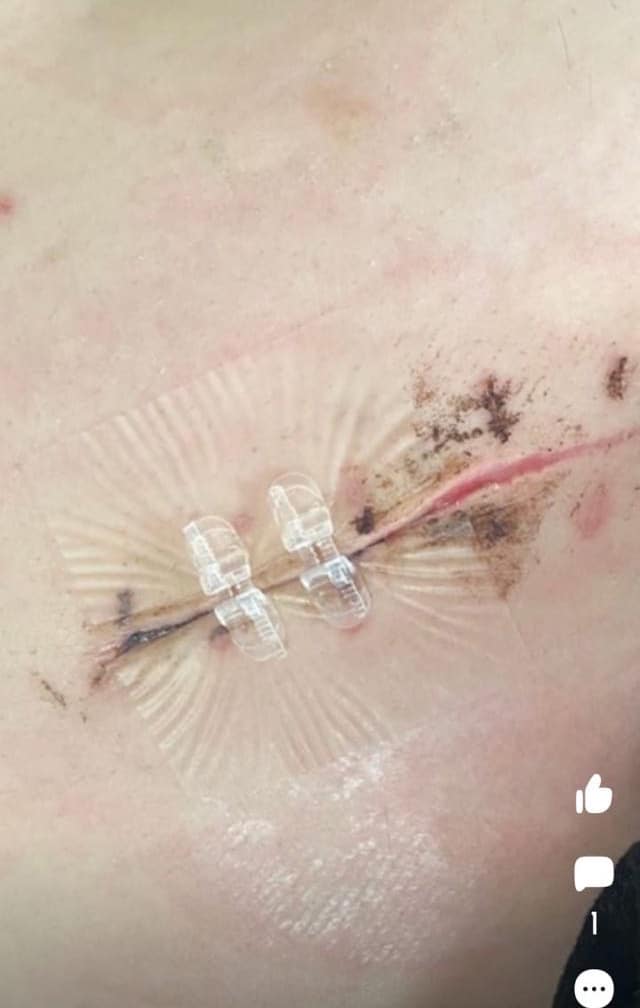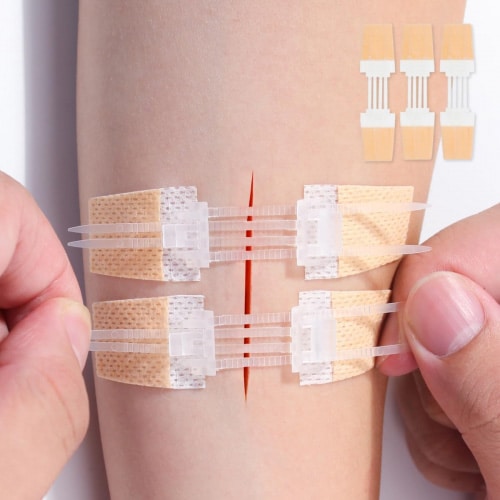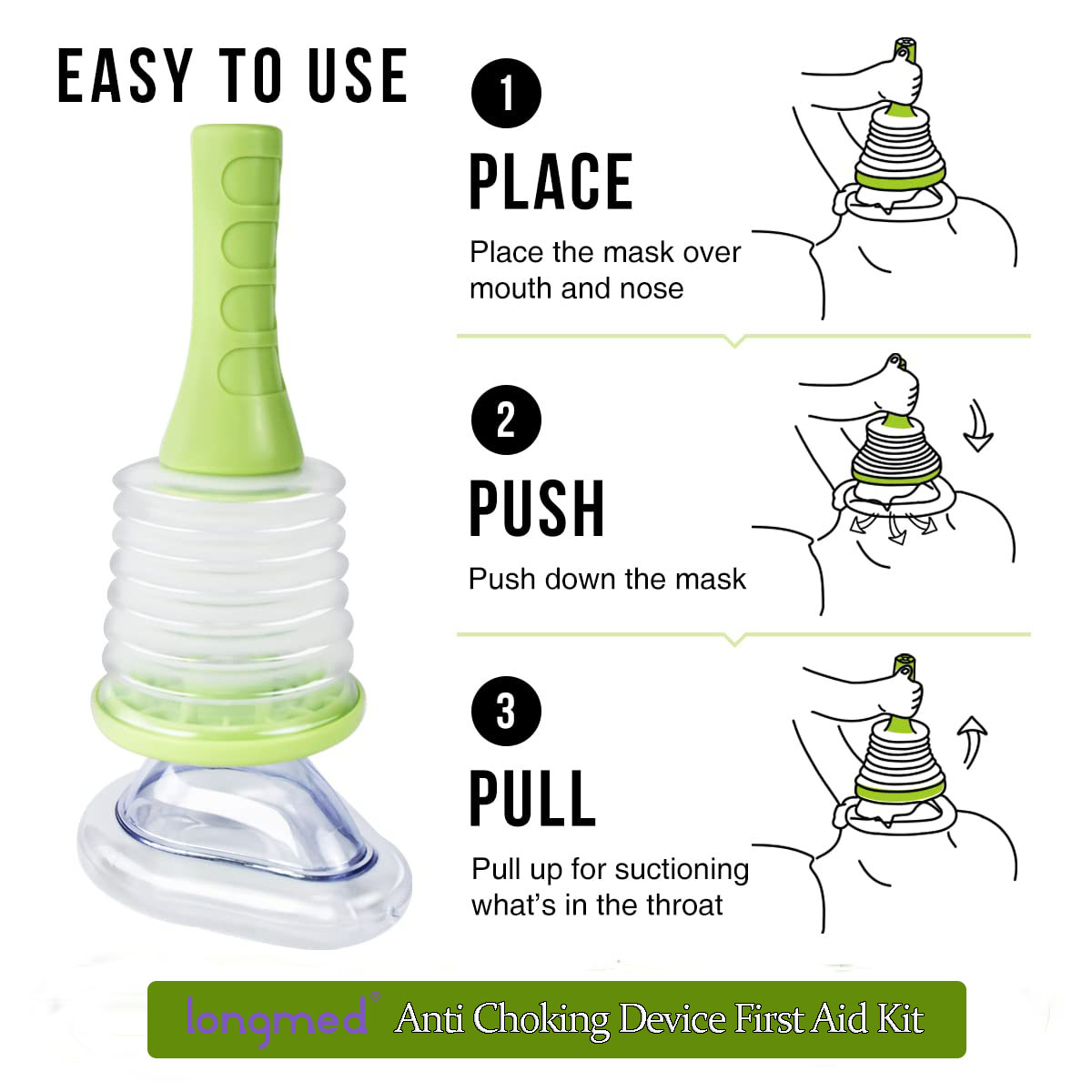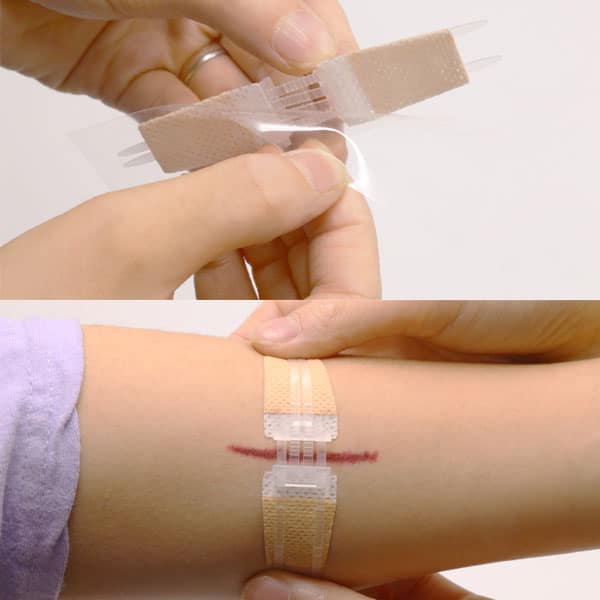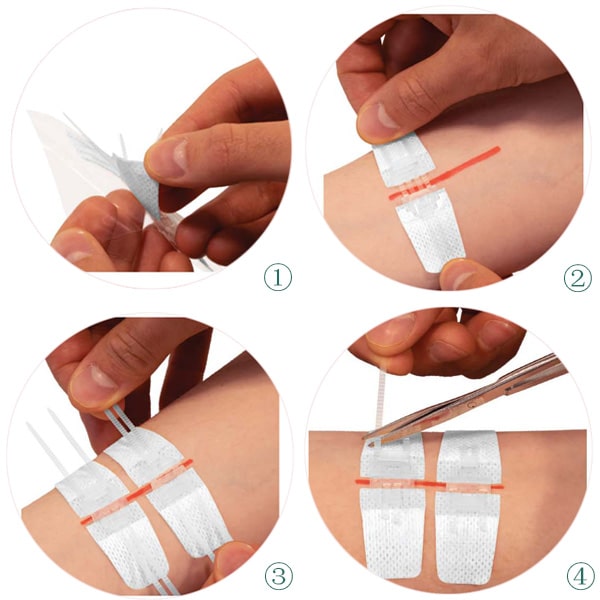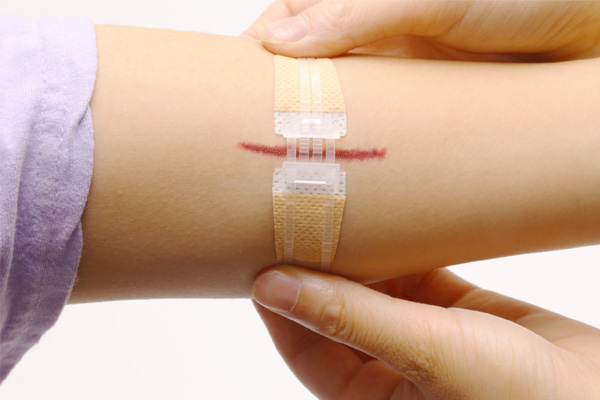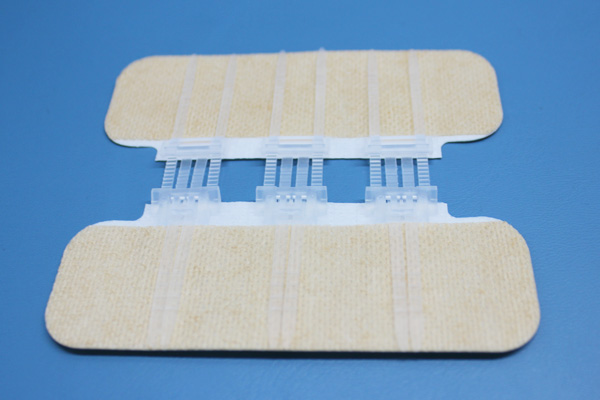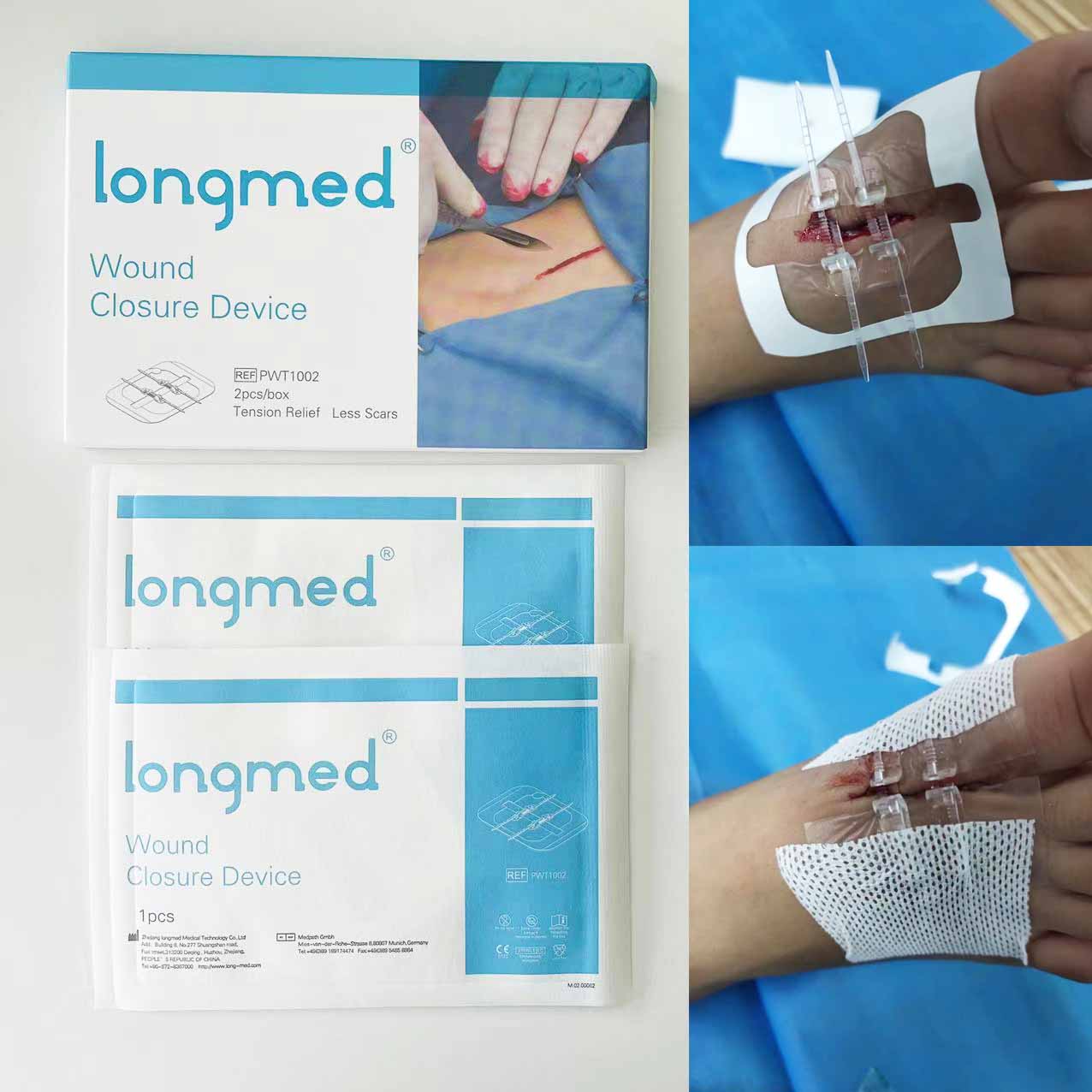
- No.277 Shuangshan Road,Deqing,Zhejiang,CHINA
- [email protected]
- WhatsApp+8613065722186
Wound Scar Treatment Zip Stitch Wound Closure Strip
Have you ever seen a “centipede scar”? When ordinary surgeons treat wounds, they usually use methods to stop bleeding and prevent infection. This is experience and the key. However, traditional sutures use “thick needles and large threads”, which can easily form centipede-shaped wound scar after the wound heals.
Especially in summer, if the wound scar is located in a conspicuous part of the body and cannot be well covered, it will really make people feel uncomfortable. So, is there any way to beautify scars?
The Scar Medicine Branch of the Chinese Association of Plastic and Aesthetic Surgery has published the “National Expert Consensus on Early Scar Treatment (2020 Edition)”, pointing out that “how to fade wound scar faster and make them less obvious under social distance” is usually the most concerned issue for patients after trauma or surgery, and it is also a challenge that doctors often face.
It is also recommended to “use external tension reducing devices on linear scars, especially scars in high-tension areas, and it is recommended to start from suturing or removing sutures, and try to use them for at least 3 months after the wound heals.”
Skin tension reducers are currently widely used external tension reducing devices, and they have achieved innovation in wound closure. This tension reducing device cleverly uses the skin’s own tension to perform non-invasive closure on the skin surface, making wound healing and wound scar more beautiful. Compared with traditional sutures, the operation saves time and effort. Especially for linear wounds, you only need to “stick and pull” the tension reducer to perform professional wound treatment at home, which was almost impossible more than a decade ago.
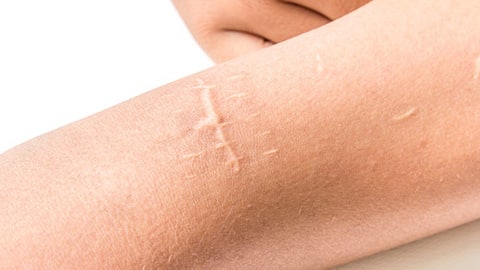
Why We Created The Longmed Wound Closure Devic For the Wound Scar Treatment?

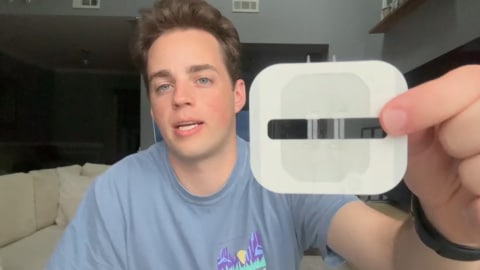
During his school years, Mr Wang Rui has conducted in-depth research in the fields of medical materials, artificial skin and drug sustained release. A classmate with scar physique caught his attention, which gave him the idea of scar aesthetic repair for the first time.
In 2009, during a follow-up operation in a hospital, Wang Rui saw that the doctor used a skin nailing machine to close the epidermis after the subcutaneous suture was completed in order to allow the patient to close the wound faster. The faster the wound is closed, the less operation time, less bleeding, less anesthetic dosage and surgical risk, which is the advantage of the skin nailing machine. Similarly, limitations also exist – because the operating space of the skin nailing machine is limited, it does not allow for delicate cosmetic repair, and the scars left after the operation are more obvious, so it is generally only suitable for specific parts, such as the scalp, trunk, limbs, etc., and the edges are neat. The process of removing the nails is also relatively cumbersome and will cause obvious pain to the patient.It can be seen that even in the hospital, the beauty and repair of scars are affected by many factors. “The market needs a tension-reducing device that can perform sutures quickly and effectively without anesthesia. It should be convenient for secondary dressing changes and can be easily disassembled and replaced – bringing convenience to doctors and reducing pain for patients.” This was Wang Rui’s most direct thought at the time.
Longmed Meidcal tried to optimize the materials, structure and suture methods of the tension reducer for the wound scar. Through independent innovation, we has solved the two core problems of skin tension reducers – structural design and the development of adhesives for adhering to the skin – simplifying and innovating the structure, reducing costs, and achieving a breakthrough in the self-developed domestic adhesive.
When was the Longmed Wound Closure Device lauched for the Wound Scar Treatment?
In 2012, Professor Topaz of Israel invented and developed a skin tension closure device as a new type of wound closure product that avoids the side effects of pressure on the wound edge and can close large wounds (wounds with a diameter greater than 10 cm). Because of its good clinical efficacy, it was quickly accepted by doctors and patients.
With the rapid growth of market demand, more skin tension reducers of different brands have been developed and launched and used by hospitals. However, the domestic civilian tension reducer market is still blank.
Various e-commerce platforms, online and offline pharmacies, retail channels, etc., medical products that can handle accidental epidermal wounds are still mainly traditional Band-Aids and tension-reducing tapes. If there is a slightly larger epidermal wound, you still need to go to the hospital.
Until 2019, a new tension reducer called Longmed Zip Stitch Wound Closure Device came out. Compared with the high price of some foreign brands in hospitals, which is often thousands of yuan, Longmed Wound Closure Device has been quickly accepted by the civilian market for its better quality, convenient operation and high cost performance. Tension reducers are becoming “affordable”, “willing to use” and “recommended” by more and more people – major e-commerce platforms have launched them one after another, and offline retail channels have been opened up, meeting the demand for civilian tension reducers and filling the gap in the market.
Advantages of Longmed Wound Closure Device For Wound Scar Treatment
Guided by clinical needs, Longmed Medical has designed a “reversible callback” tension reducer,which is the Longmed Wound Closure Device.
“Progress in the Application of Skin Retractors in Skin Defects of Trauma Patients” mentioned: “…Combined with the patient’s tolerance, skin stretching, wound closure, etc., the skin retractor is adjusted regularly.” A good tension reducer should have the function of adjusting the tension reduction force, which is called “reversible callback” in the industry. For example, when operating the tension reducer, the doctor can adjust the tightness of the tension reducer according to the actual wound closure situation, and dynamically adjust it according to the patient’s wound healing after surgery. If there is no adjustment function, the practicality and effect of the tension reducer will be greatly reduced.
Glue is also an important material that determines the tension reduction effect. Since the tension reducer needs to adhere to the skin surface, too strong viscosity can easily cause secondary trauma, and too weak viscosity can cause it to be unable to stick. In the past, the adhesive of the tension reducer was basically imported from abroad. Langte Medical has achieved a technological breakthrough by relying on its own research and development of adhesive technology. The colloid is skin-friendly and not easy to be allergic, and the stickiness is improved. When replacing the tension reducer, it will not cause damage to the skin.
Up to now, Longmed Medical has a leading market share in the civilian tension-reducing market at home and abroad, and has become the TOP1 tension-reducing device brand in the sub-category of the North American Amazon platform – applying professional medical product standards to the civilian market, achieving a true “dimensionality reduction strike”, making patients “affordable”, “willing to use”, and “recommended”. The tension-reducing devices independently developed and innovated have multiple invention patents, covering more than 100 models and specifications, which can meet various wound tension-reducing needs. It has entered and served more than a thousand tertiary and secondary hospitals across the country, and has obtained multiple certifications such as FDA, CE, and MDR certificates.
